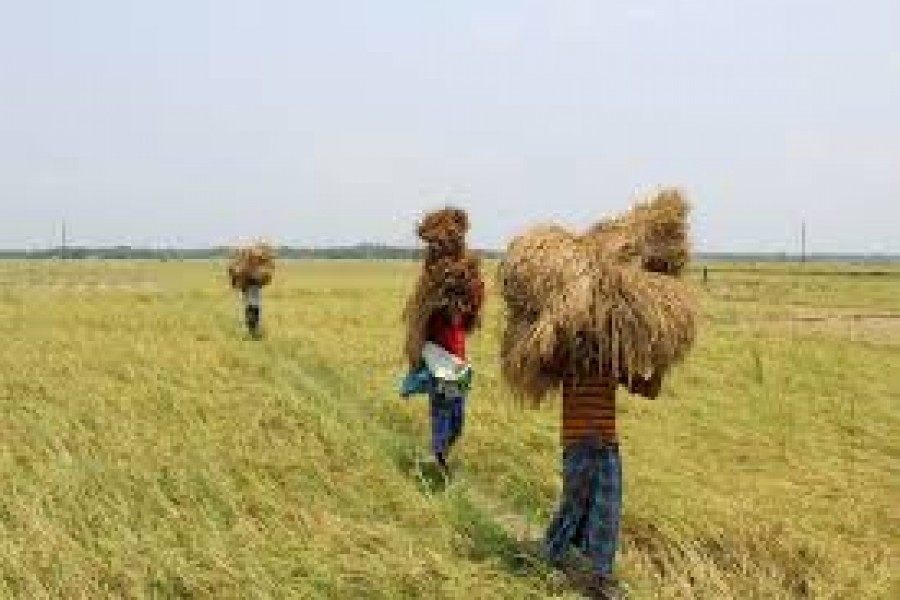
Published :
Updated :

The crisis emanating from the ongoing pandemic has been all-engulfing. Bangladesh's farm sector is also in the midst of a very difficult situation as far as the harvesting of its main rice crop - Boro - is concerned. Millions of daily-wage earning labourers, now stuck in cities, towns and other parts of the country due to Covid-19-related shutdown, have been going without work for more than six weeks in a row. In such a situation, the harvesting of Boro is being seriously affected due to the severe shortage of farm labourers in different parts of the country, including haor areas.
The government, however, has come to the rescue of the peasantry by making available agricultural machinery such as combined harvesters and reapers. The Ministry of Agriculture (MoA), reportedly, has already distributed more than 1200 harvesters and reapers at a cost of Tk 1.0 billion to the farmers. It will make available more of similar farm equipment at an additional amount of Tk 1.0 billion. The farm machinery are being mainly deployed in the country's haor and low-lying areas that are particularly vulnerable to flash floods during this period of the year. Farmers are procuring those at subsidised rates up to 70 per cent of their actual cost.
However, the government's endeavours relating to farm machinery distribution are not enough to compensate for the shortage of labourers. The MoA is also aware of this fact. It is, thus, transporting labourers from Dhaka and other parts of the country under special arrangements to haor areas that produce nearly one-fifth of the country's Boro rice output. Besides, different voluntary organisations and students are helping the farmers in the harvest of the crop. Yet nearly 80 per cent of Boro rice awaits harvesting.
There are plausible reasons behind the government being sensitive to the harvest of Boro crop in haor and other low-lying areas of at least five districts, namely, Habiganj, Kishoreganj, Sunamganj, Moulavibazaar and Sylhet. In 2017, flashfloods starting in the final week of March caused extensive damage to Boro crop in these districts. The total loss of Boro rice production was estimated at more than 0.8 million tonnes. Haor people went through a very difficult time for months together following the natural disaster. Besides, the loss of crop had made the rice prices soar to a record high, prompting the government to make the highest-ever rice imports.
The shortage of agricultural labourers is nothing new. It becomes acute during the harvesting time of major food crops. Migration of farm labourers to urban areas and their switching over to better-paying occupations are largely responsible for the shortage. Thus, it is important to mechanise the agriculture at a fast pace. The transformation will also make the farm practices efficient and productive. However, mere wishes would not be enough to meet the goals here. There is no denying there has been some progress in farm mechanisation. More needs to be done to make further progress.
Moreover, the benefits of mechanisation need to be shared also by the small and marginal farmers. It is most likely that relatively more affluent section of the farmers would be benefited most by the programme of subsidised distribution of farm machinery. In line with past practices, they would employ those for commercial purposes. To avoid such a possibility, the government might think of using the age-old institutions called cooperative societies at the grassroots and hand over the farm machinery to those. This could be the best way of spearheading the programme of farm mechanisation without bypassing small and marginal farmers.


 For all latest news, follow The Financial Express Google News channel.
For all latest news, follow The Financial Express Google News channel.